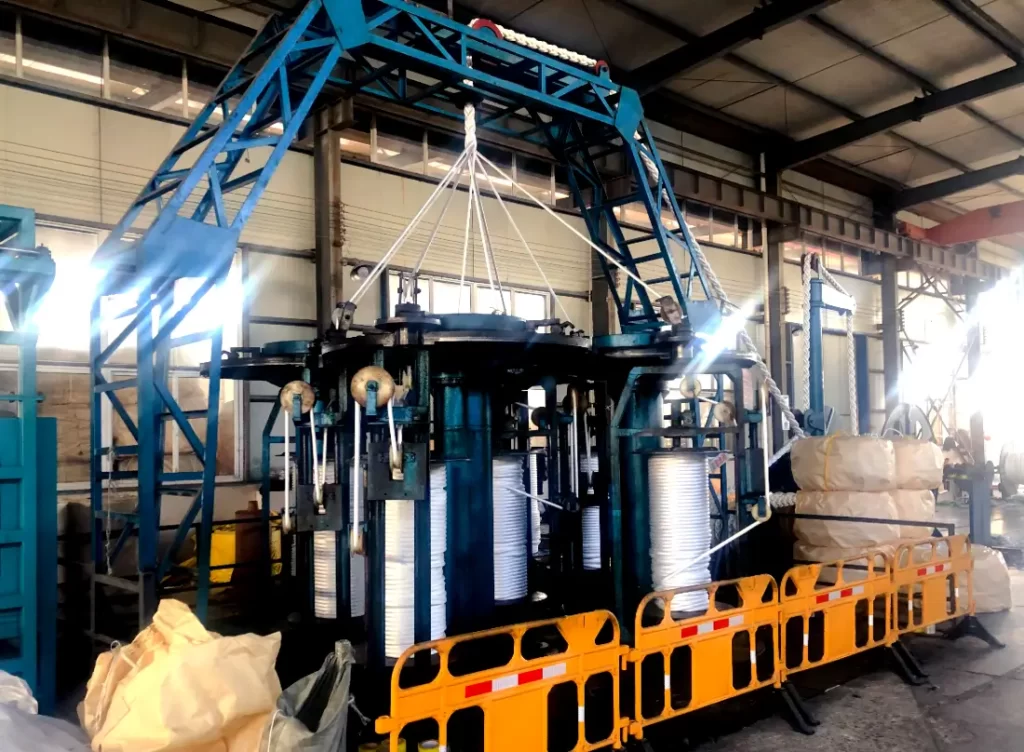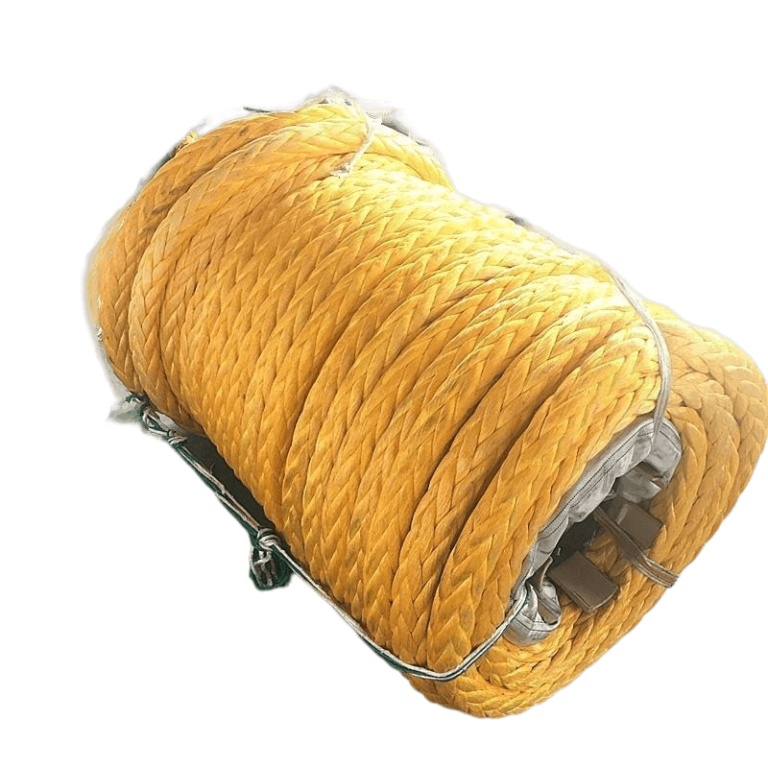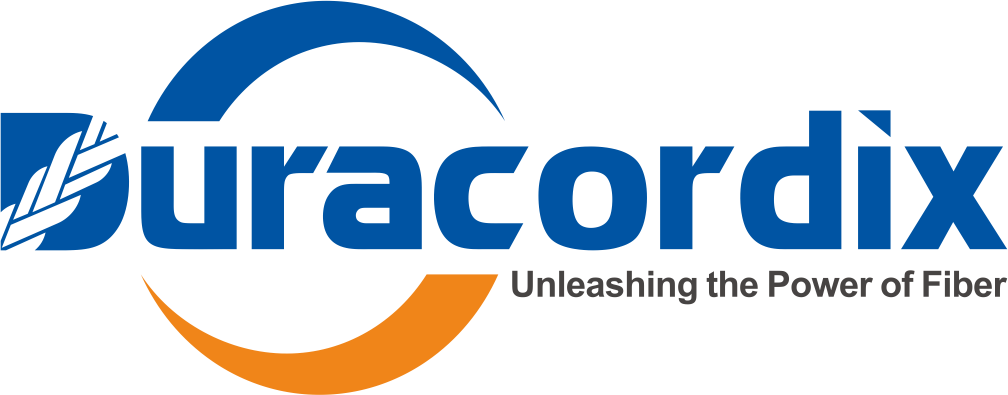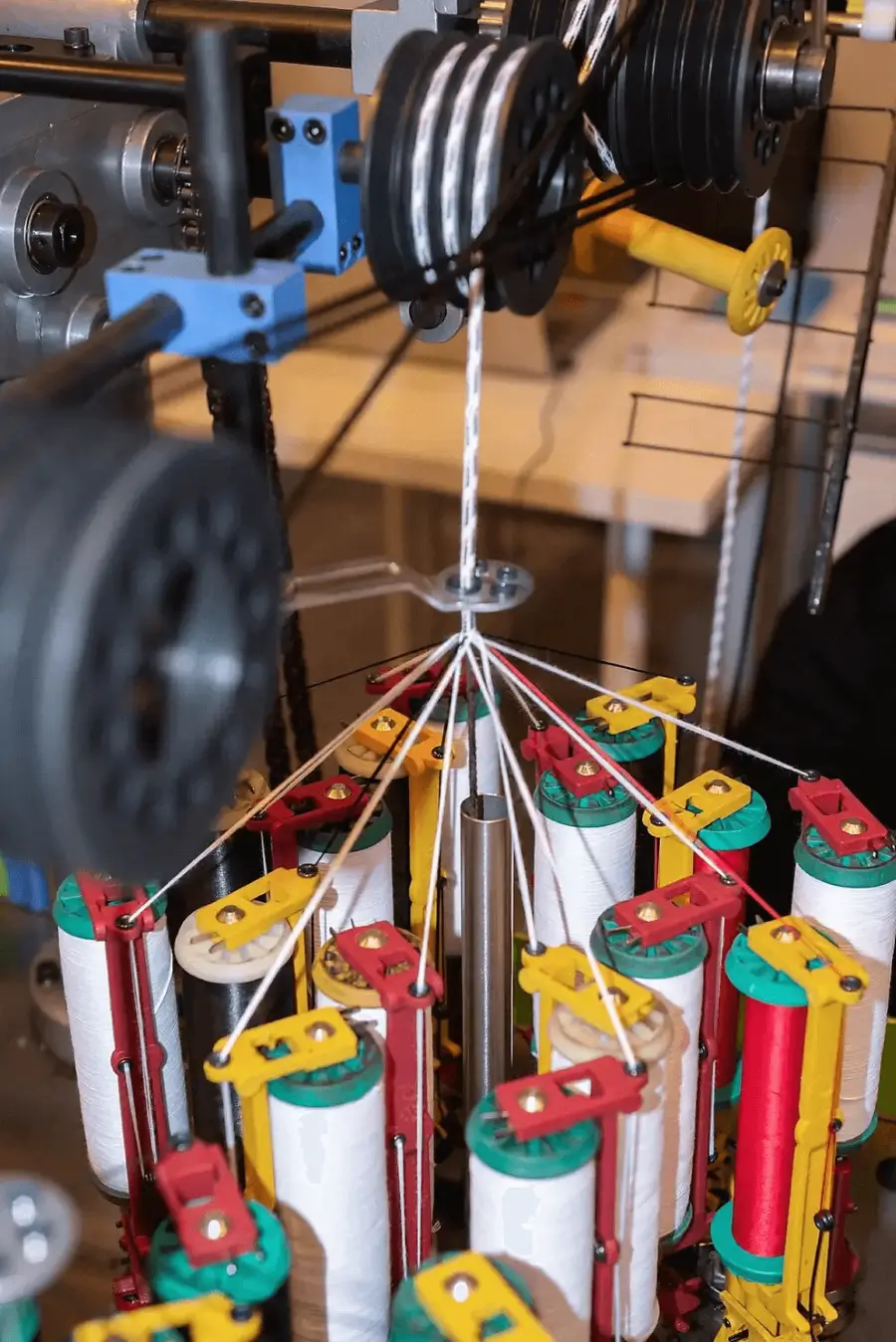cuerda de ancla marina

MARINA CUERDA DE ANCLA
Las cuerdas de anclaje marinas de Duracordix están hechas de fibra de nailon con revestimiento de poliéster y diseñadas para brindar soluciones de anclaje confiables y duraderas para sus necesidades de navegación y pesca.
- Alta resistencia para remolque pesado.
- Excelente absorción de impactos para mares agitados.
- Resistente a los rayos UV para una vida útil más larga.
Índice de contenidos de esta página
Para garantizar un acceso fácil a la información que necesita, hemos creado esta tabla de contenido que lo llevará directamente a la sección correspondiente cuando haga clic.
- el favorito del cliente
Venta caliente tamaños
Las mejores opciones: los tamaños más populares de nuestra selección de líneas de anclaje marinas

3/8" (10 mm)
Ideal para embarcaciones pequeñas, kayaks y motos acuáticas. Ofrece excelente absorción de impactos y resistencia a la abrasión para un anclaje fiable.

5/8" (16 mm)
Ideal para embarcaciones más grandes y aplicaciones de servicio pesado, brindando una resistencia excepcional, confiabilidad y resistencia al desgaste, los rayos UV y los productos químicos.

7/8" (22 mm)
Ideal para embarcaciones comerciales, construcción marina y otras situaciones exigentes que necesitan resistencia y durabilidad superiores.
Duracordix es un cabo de anclaje marino y línea de muelle fabricante y proveedor En China.
podemos producir varios tamaños para diferentes aplicaciones y por encargo Para proyectos especiales.
No importa que estés buscando una proveedor mayorista Ya sea una cuerda de anclaje o una línea de muelle hechas a medida, podemos ayudarle. Comuníquese con Duracordix ahora.
- Tallas disponibles
ESPECIFICACIÓN
Buceo profundo: especificaciones esenciales de nuestra cuerda de ancla marina.
| Diámetro (mm) | Cir(pulgada) | Ktex (g/m) | Rompiendo(kn) |
|---|---|---|---|
| 16 | 2 | 164 | 59 |
| 20 | 2-1/2 | 255 | 92 |
| 22 | 2-3/4 | 309 | 111 |
| 24 | 3 | 368 | 127 |
| 28 | 3-1/2 | 501 | 172 |
| 32 | 4 | 654 | 225 |
| 36 | 4-1/2 | 828 | 285 |
| 40 | 5 | 1018 | 352 |
| 44 | 5-1/2 | 1236 | 420 |
| 48 | 6 | 1473 | 500 |
| 52 | 6-1/2 | 1730 | 600 |
| 56 | 7 | 2009 | 690 |
| 60 | 7-1/2 | 2297 | 780 |
| 64 | 8 | 2616 | 900 |
| 72 | 9 | 3306 | 1090 |
| 80 | 10 | 4089 | 1344 |
| 88 | 11 | 4954 | 1626 |
| 96 | 12 | 5892 | 1950 |
| 104 | 13 | 6911 | 2320 |
| 112 | 14 | 8024 | 2670 |
| 120 | 15 | 9198 | 3050 |
Nota: basado en cuerda de ancla trenzada doble y otros tamaños están disponibles a pedido.
- características principales
Ventajas DE Ventajas DE Línea MARINE ANCHOR
¡Descubra las ventajas de la línea de anclaje Duracordix!
Elasticidad superior
Nuestra cuerda de anclaje de nailon proporciona una excelente absorción de impactos, lo que permite un anclaje más suave al mitigar los picos de fuerza repentinos durante aguas turbulentas.
Durabilidad
Fabricada con precisión, nuestra cuerda marina resiste los rayos UV, el agua salada y la abrasión, lo que garantiza longevidad y reduce el desgaste en entornos marinos.
Equilibrio de peso
Aprovechando las propiedades únicas del nailon, nuestra cuerda de anclaje ofrece una relación resistencia-peso incomparable, brindando seguridad sin volumen adicional.
Diseño anti-torsión
Nuestra cuerda de ancla marina está diseñada meticulosamente para evitar torceduras y enredos, lo que facilita un despliegue sin esfuerzo y garantiza operaciones de recuperación sin estrés.
- Clientes felices
Lo que dijeron
Voces confiables: Por qué los marineros eligen nuestra cuerda de ancla marina.
Recomiendo ampliamente el cabo de ancla Duracordix por su resistencia, durabilidad y resistencia a la humedad y los rayos UV. Es el cabo perfecto para mis necesidades náuticas.
Sarah BrownLlevo años usando la cuerda de anclaje Duracordix y nunca me ha decepcionado. Es una cuerda de alta calidad con una excelente relación calidad-precio.
Lisa RodríguezEl cabo de ancla de nailon de Duracordix es mi opción predilecta para todas mis necesidades náuticas. Es fiable, duradero y ofrece una excelente absorción de impactos. Lo recomiendo ampliamente.
David Lee- Compra sin dolor
¿POR QUÉ ELEGIR?
Cuerda de anclaje Duracordix
- Rendimiento inquebrantable: La cuerda de anclaje Duracordix reduce el deshilachado en 90%. Su excepcional resistencia a la tracción garantiza cero roturas, proporcionando un anclaje sin preocupaciones en todo momento.
- Resistencia Elemental: Experimente la mayor vida útil de la cuerda 30%. Nuestra cuerda resiste los daños del agua salada y los rayos UV, superando con creces la durabilidad de las cuerdas marinas estándar en condiciones adversas.
- Manejo fácil: Con una textura más suave 40%, la cuerda Duracordix facilita su manejo y despliegue. Su diseño aerodinámico facilita el anclaje, agilizando y optimizando la operación.
- Maravilla de bajo mantenimiento: Dedique menos tiempo al mantenimiento del 60%. Nuestra resistente cuerda de nailon reduce el mantenimiento frecuente, permitiéndole concentrarse en la navegación.
- Adaptabilidad marítima: Apto para más de 15 condiciones marinas y embarcaciones. Duracordix le garantiza el cabo óptimo para cualquier situación de fondeo.
- Rentable: Duracordix ofrece calidad superior con un ahorro de 20%. Obtenga cuerda marina de primera calidad sin afectar su presupuesto, garantizando un valor inigualable.
Relacionado productos
Maximice su experiencia con el cable de cabrestante Duracordix con productos relacionados de primera calidad
Cuerdas duraderas diseñadas para asegurar embarcaciones, resistiendo los elementos marinos, asegurando la estabilidad durante el atraque.

Conector sintético ligero; alternativa más segura al metal; versátil con alta relación resistencia-peso.

Cuerda marina esencial; resiste el agua salada, los rayos UV; ofrece resistencia y flexibilidad para tareas de navegación.
Preguntas frecuentes
Aclarando dudas: Revelando respuestas clave sobre nuestra cuerda de anclaje marina de nailon
¿Qué es la cuerda de ancla marina?
La cuerda de ancla marina, también conocida como cabo de ancla o cabo, es una cuerda o cadena que se utiliza para anclar un barco al fondo del mar.
¿Qué materiales se utilizan para las cuerdas de anclaje marinas?
Las cuerdas de anclaje marinas pueden estar hechas de una variedad de materiales, incluidos nailon, poliéster, polipropileno y cadena.
¿Qué factores hay que tener en cuenta a la hora de elegir un cabo de ancla marino?
Los factores a tener en cuenta al seleccionar una cuerda de ancla incluyen el tamaño y el peso de la embarcación, la profundidad y el tipo de fondo marino y las condiciones climáticas predominantes.
¿Cómo realizo el mantenimiento de las líneas de anclaje marinas?
El mantenimiento de sus líneas de anclaje marinas implica inspecciones regulares para detectar desgaste, limpieza para eliminar la acumulación de suciedad y sal, y un almacenamiento adecuado para evitar torceduras o enredos.
¿Cuáles son los tipos más comunes de construcciones de cuerdas de anclaje marinas?
Los tipos más comunes de construcciones de cuerdas de anclaje marinas incluyen cuerdas retorcidas de tres hilos, cuerdas de doble trenza y cuerdas de varios hilos.
¿Cómo coloco y recupero correctamente mi cuerda de anclaje?
Para fijar el ancla, bájela lentamente hasta el fondo y suelte suficiente cabo para que la relación sea de al menos 7-10:1. Baje el cabo hasta que el ancla esté firmemente incrustada en el fondo marino. Para recuperar el ancla, pase lentamente la embarcación por encima del ancla mientras tira del cabo.
¿Qué longitud debe tener la cuerda del ancla?
La longitud de la cuerda del ancla debe ser al menos de 7 a 10 veces la profundidad del agua en la que planea anclarse.
¿Cómo empalmar la cuerda del ancla?
Pasos:
Prepare el extremo de la cuerda:
- Mida aproximadamente 60 cm desde el extremo de la cuerda y márquelo. Este será el punto de enterramiento.
- Desenrolle ligeramente los 12 hilos, lo suficiente para trabajar con ellos, y sujete con cinta adhesiva o ate los extremos individuales de los hilos para evitar que se deshilachen.
Formar el bucle deseado:
- Desde la marca, doble la cuerda para crear el tamaño de bucle deseado.
Comienza el entierro:
- Utilizando el fid o tubo, abra la cuerda en el punto de enterramiento marcado.
- Inserte el extremo cónico de la cuerda en el fid.
- Introduce el fid por el centro de la cuerda, asegurándote de no enganchar ningún hilo. Esto enterrará el extremo dentro de la cuerda.
Tirar y apretar:
- Una vez que el fid salga por el otro extremo, tire del extremo de la cuerda hasta que el bucle tenga el tamaño deseado.
- Apriete el lazo enrollando la cubierta de la cuerda sobre la sección enterrada desde el extremo del lazo hacia el extremo de la cola.
Puntada de bloqueo (opcional pero recomendada):
- Usando una aguja y un cordel, cosa varias puntadas de seguridad a lo largo del cuello del empalme (donde comienza la sección enterrada).
- Esto ayudará a asegurar el empalme, especialmente cuando la cuerda esté bajo carga.
Recorte y acabado:
- Corte cualquier exceso de cola cerca del punto de salida del entierro.
- En el caso de las cuerdas sintéticas, puede derretir ligeramente la punta para evitar que se deshilache. Tenga cuidado para no dañar la cuerda.
¿Cómo fijar la cuerda del ancla a la cadena?
Para sujetar la cuerda del ancla a la cadena, utilice un grillete u otro método de conexión apropiado.
¿Cuál es el mejor material para las líneas de anclaje?
El nailon es el material más popular para las líneas de anclaje debido a su resistencia, elasticidad y resistencia a los rayos UV y a la abrasión.
¿Cómo elegir una cuerda de anclaje de nailon?
1. Evaluar las necesidades de fuerza:
Tenga en cuenta el peso del equipo, la capacidad de carga máxima y los factores de seguridad para lograr la resistencia adecuada de la cuerda de nailon.
2. Elija el diámetro de la cuerda:
Equilibre la resistencia y el manejo seleccionando un diámetro según requisitos específicos.
3. Evaluar la resistencia a la abrasión:
Elija una cuerda con trenzado y revestimiento de alta calidad para una mayor durabilidad en aplicaciones exigentes.
4.Analizar estiramiento/elasticidad:
Determine el estiramiento necesario para anclar o remolcar y elija una cuerda que satisfaga esas necesidades.
5. Garantizar la resistencia a los rayos UV y a los productos químicos:
Seleccione una cuerda con protección UV y resistencia química para una mayor longevidad y durabilidad.
6. Revise el embalaje y el almacenamiento:
Duracordix garantiza un embalaje y almacenamiento adecuados para evitar daños al producto durante el transporte.
7.Priorizar el soporte posventa:
Nuestro equipo de servicio dedicado atiende sus inquietudes y garantiza la satisfacción con nuestros productos.
¿Con qué frecuencia debo reemplazar mi cuerda de ancla marina?
La frecuencia con la que debe reemplazar el cabo de su ancla marina depende de varios factores, como la frecuencia de uso, las condiciones de uso y el tipo de cabo. Como regla general, debe reemplazar el cabo si muestra signos de desgaste o daño.
¿Cuál es la diferencia entre las cuerdas de ancla marinas torcidas y trenzadas?
Las cuerdas retorcidas se fabrican retorciendo varias hebras de fibras, mientras que las cuerdas trenzadas se fabrican tejiendo varias hebras. Las cuerdas trenzadas suelen ser más resistentes y duraderas que las retorcidas.
¿Qué es una cuerda de anclaje sintética de 3 hilos?
La cuerda de anclaje sintética de 3 hebras es un tipo de construcción de cuerda que consta de tres hebras retorcidas entre sí.
¿Puedo utilizar una cuerda normal como cuerda de ancla marina?
No, no se recomienda usar una cuerda convencional como cabo de ancla marina. Los cabos de ancla marina están diseñados específicamente para soportar las duras condiciones del entorno marino y suelen estar fabricados con materiales resistentes a la sal, la luz ultravioleta y la abrasión.
¿Cuál es el propósito de un eslabón giratorio en una cuerda de ancla marina?
Un eslabón giratorio en una cuerda de ancla marina ayuda a evitar que la cuerda se tuerza o se enrosque, lo que puede debilitarla con el tiempo y provocar que se rompa.
¿Qué es una cuerda de ancla sintética versus una cadena?
La cuerda de anclaje sintética está hecha de materiales sintéticos, mientras que la cadena es una cadena metálica que se utiliza para fondear. Las cuerdas de anclaje sintéticas suelen ser más flexibles y ligeras que la cadena, pero pueden no ser tan duraderas.
¿Con qué frecuencia debo inspeccionar mi cuerda de ancla marina?
Se recomienda inspeccionar el cabo del ancla marino antes de cada uso y periódicamente durante la temporada de navegación para asegurarse de que esté en buenas condiciones.





Su cabo de ancla de nailon es el más fiable y duradero que he usado. Es fácil de manejar y tiene un rendimiento excepcional en condiciones marinas adversas.
Juan Smith